Originating from the peaks of Amarkantak in the Shahdol district in Madhya Pradesh, the River Narmada reaches the Arabian Sea after a 1,300 mile journey through forests and fields spread across three states: Madhya Pradesh, Maharastra and Gujarat. The Indian Government’s plan to build 30 large, 135 medium and 3000 small dams funded by the World Bank across the River Narmada and her tributaries wreaked havoc. In the name of development, thousands of indigenous people lost their homes and their way of life.
Once, everything was open in the lives of these indigenous adivasis. Their lush lands had never seen a fence. Their fragile homes never had doors. These indigenous people of the Narmada valley never locked themselves. Everyone was equal. Men wore exquisitely crafted earrings, women smoked hand-rolled cheroots. Men carried gifts to their bride’s home. People planted trees in memory of the dead. They celebrated spring. They worshipped nature. They shared everything they had. But for salt and matches, they were a people who needed nothing from the outside world. But the world outside worked its way into their lives in a catastrophic manner. Narmada could easily continue living without them. But they cannot live without her.
These pictures portray the story of a culture and lifestyle that has been submerged by the rising waters of the Sardar Sarovar Dam. These pictures tell a part of the brutal truth. The bald hills, the trees, the rugged landscape are all underwater. The people have been evicted and displaced from their homes. They now languish in resettlement camps. Their art and culture, their oral histories and earthy languages, their unique identity has been dumped deep down into the river. These pictures plead for the adivasis’ right to live. They speak for a twenty-year struggle against injustice.
These photographs are a result of two travels across 25 adivasi villages in Maharashtra and Madhya Pradesh affected by the the Sardar Sarovar project dam.
(Text: Meena Kandasamy)
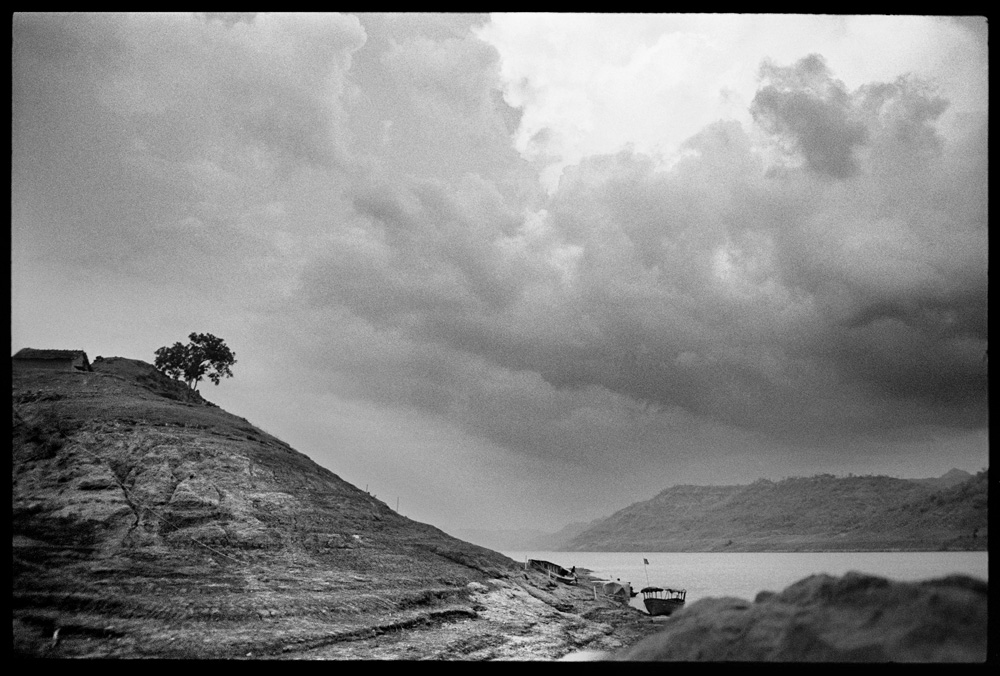
Narmada valley, Kakrana village, Madhya Pradesh, 2004.
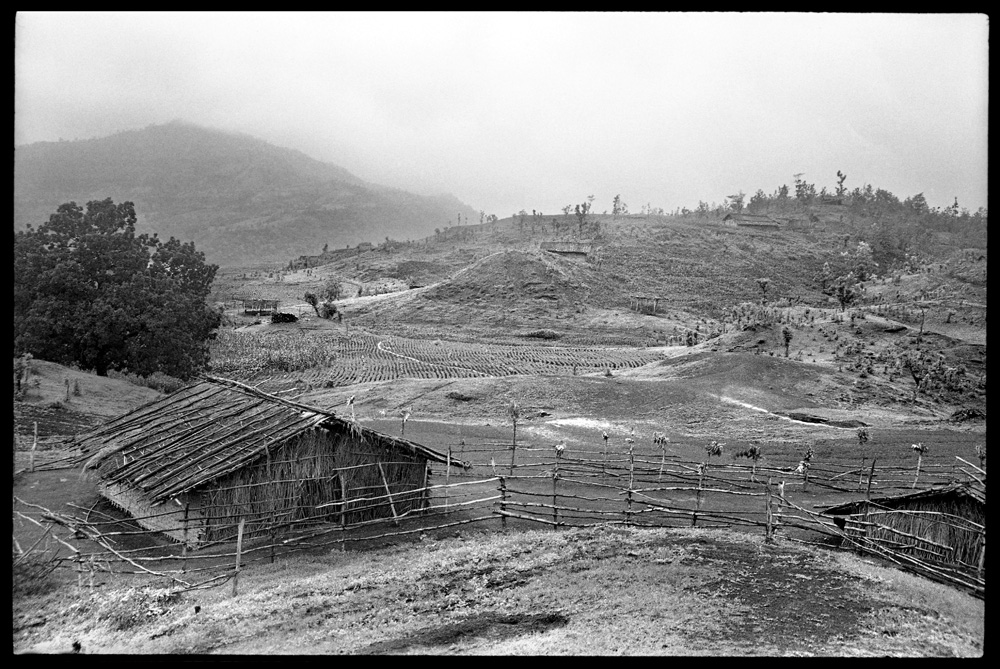
A panoramic view of the landscape of a village along the Narmada. Jalsandi, Madhya Pradesh, 2004.

A tribal woman walking past her field of crops . Tritisurr, Maharashtra, 2004.
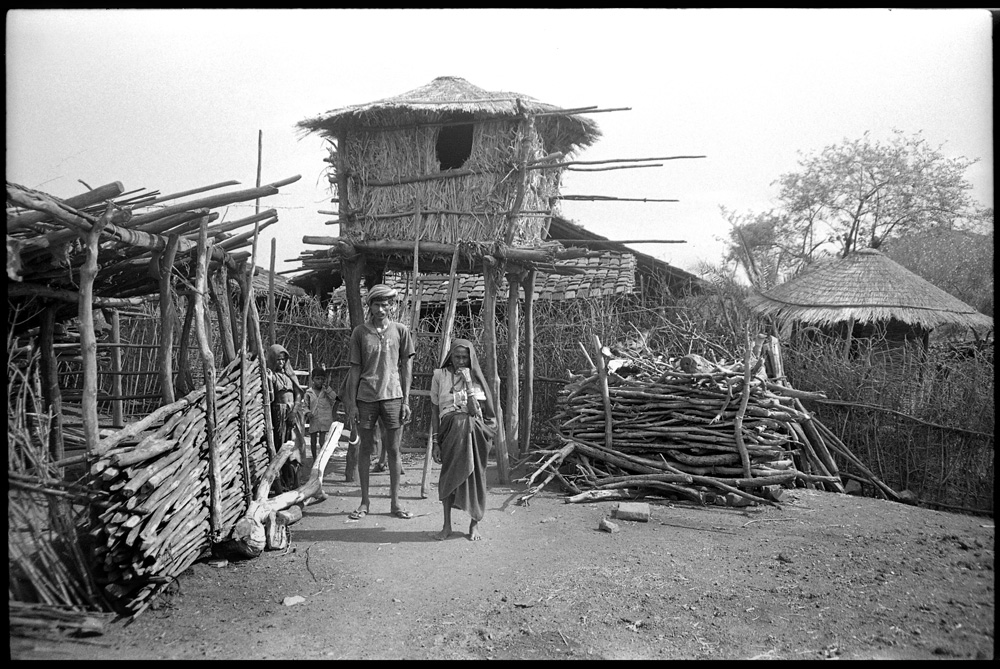
A tribal family standing amidst their huts after working on a hot day. Kakrana village, Madhya Pradesh, 2004.

Three young girls dressed in their daily attire laced with a traditional touch of accessories and their shyness. Kakrana village, Madhya Pradesh, 2004.
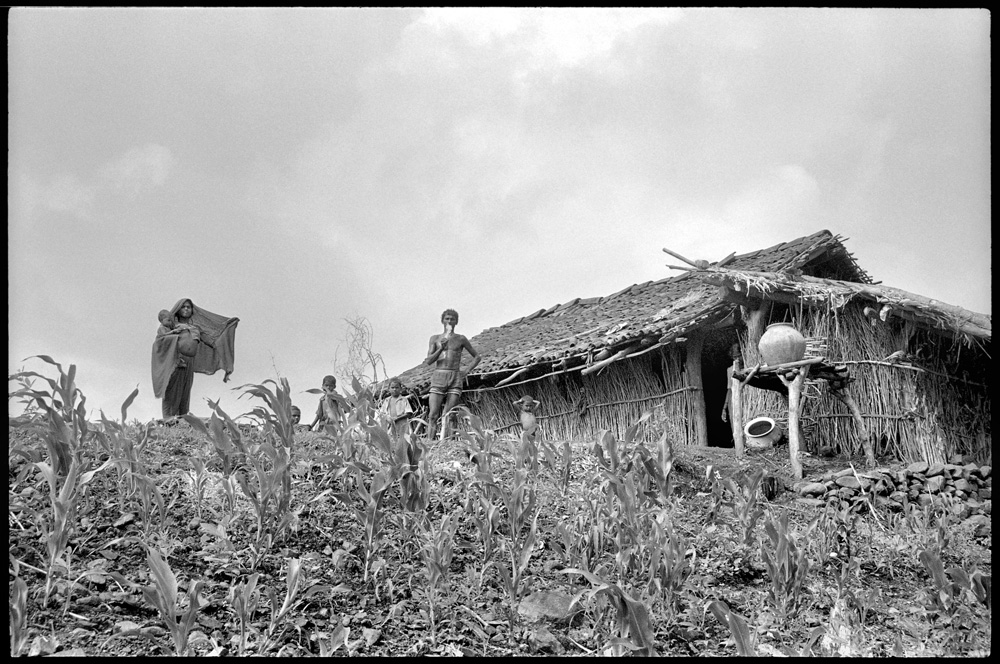
A farmer with his wife and children beside his hut, living his day on a farm. Narmada valley, Maharashtra, 2004.
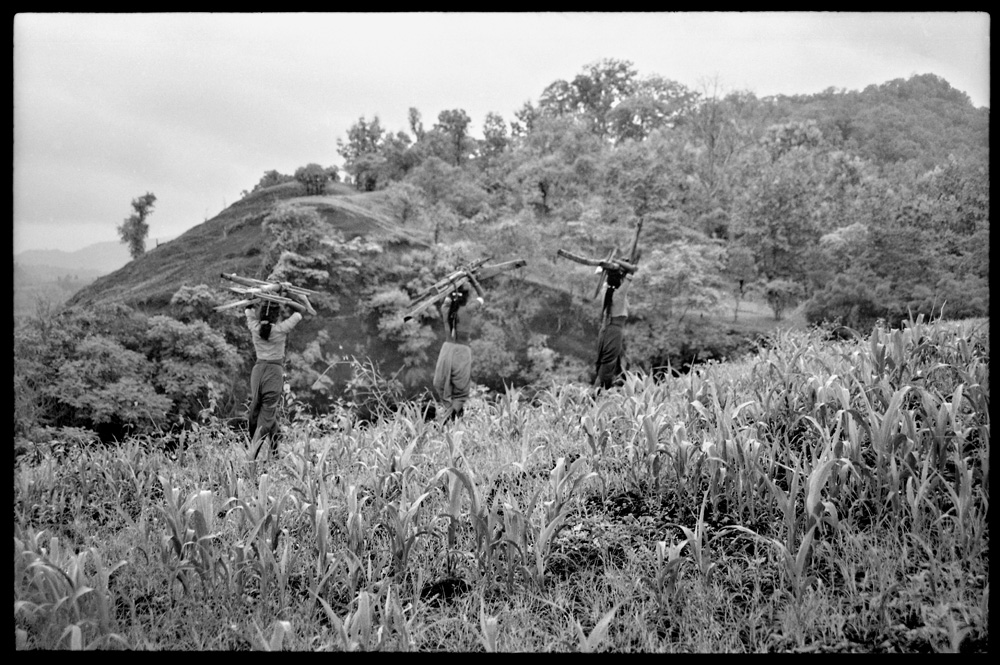
Three ladies carrying ploughs on their heads, heading home through the hilly village. Narmada valley, 2002.
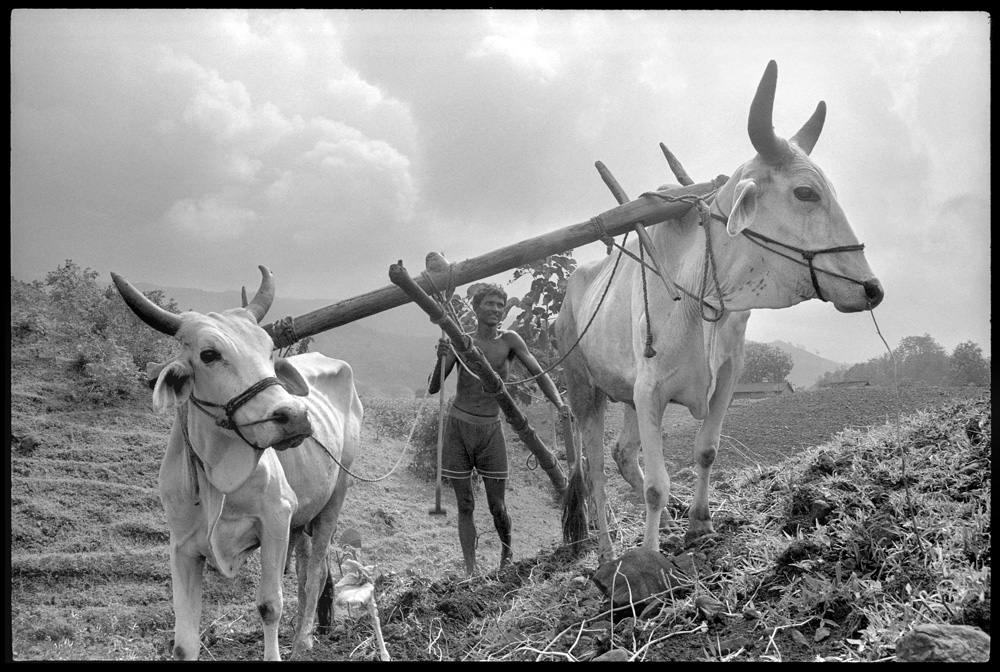
A peasant with his pair of bullocks ploughing the field. Tritisurr, Maharashtra, 2004.

A tribal lady in her hut sitting beside the chulah (stove) about to cook. Tritisurr, Maharashtra, 2004.

A girl enjoys pumping water with her mother, while other women wait for their turn. Kakrana village, Madhya Pradesh, 2004.
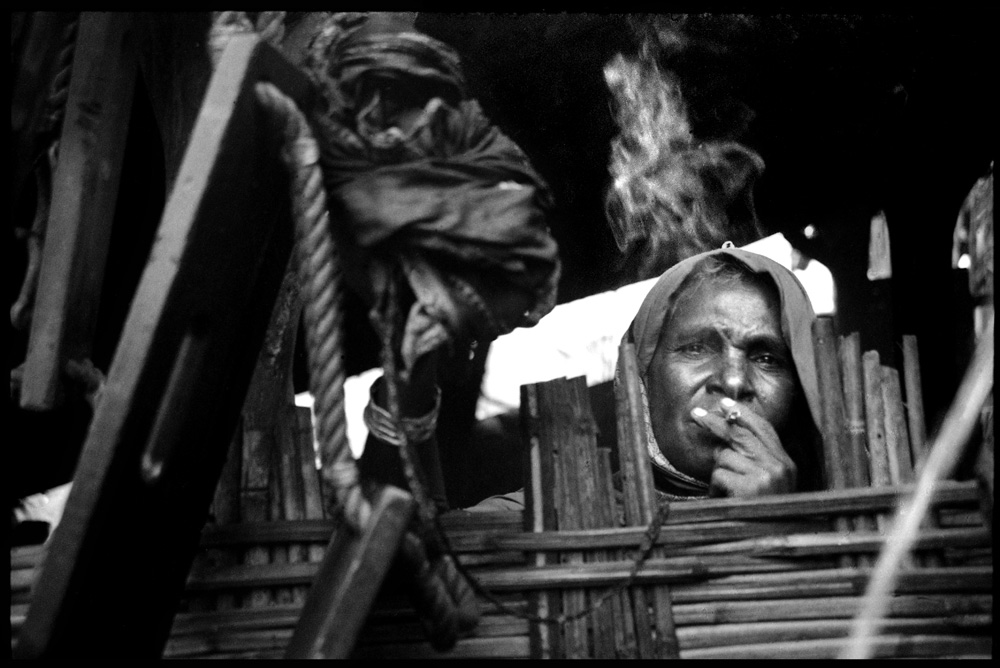
An old woman smoking a Cheroot in her hut. Narmada valley, 2002.
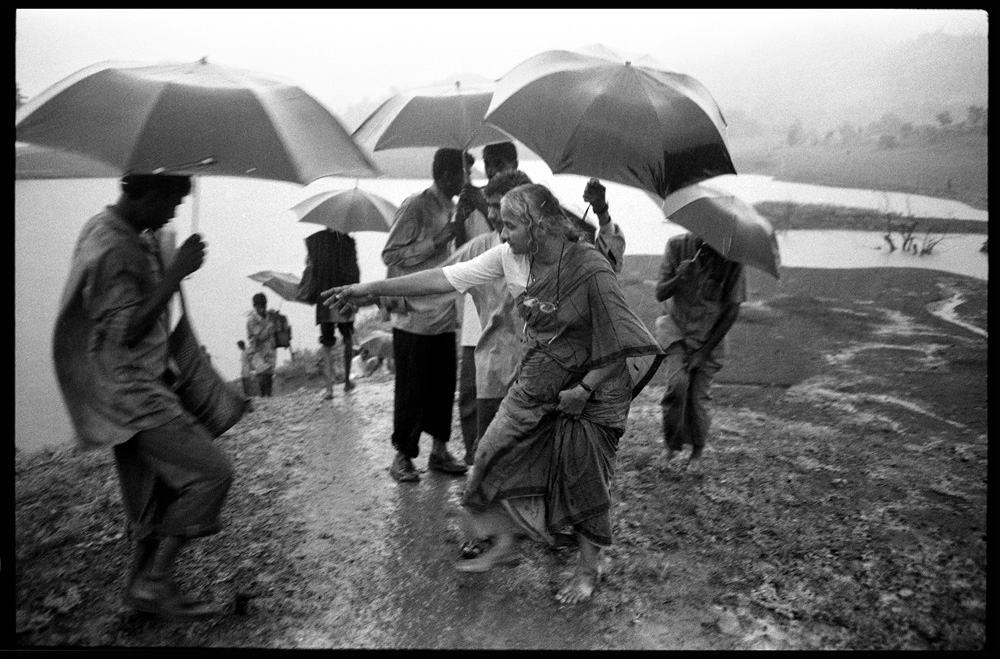
Social activist Medha Patkar, visiting the villagers of the submerging area during monsoon. Bharad, Maharashtra, 2004.

Villagers gathering around Medha Patkar, discussing before their last few days of rehabilitation. Jalsandi, Madhya Pradesh, 2004.
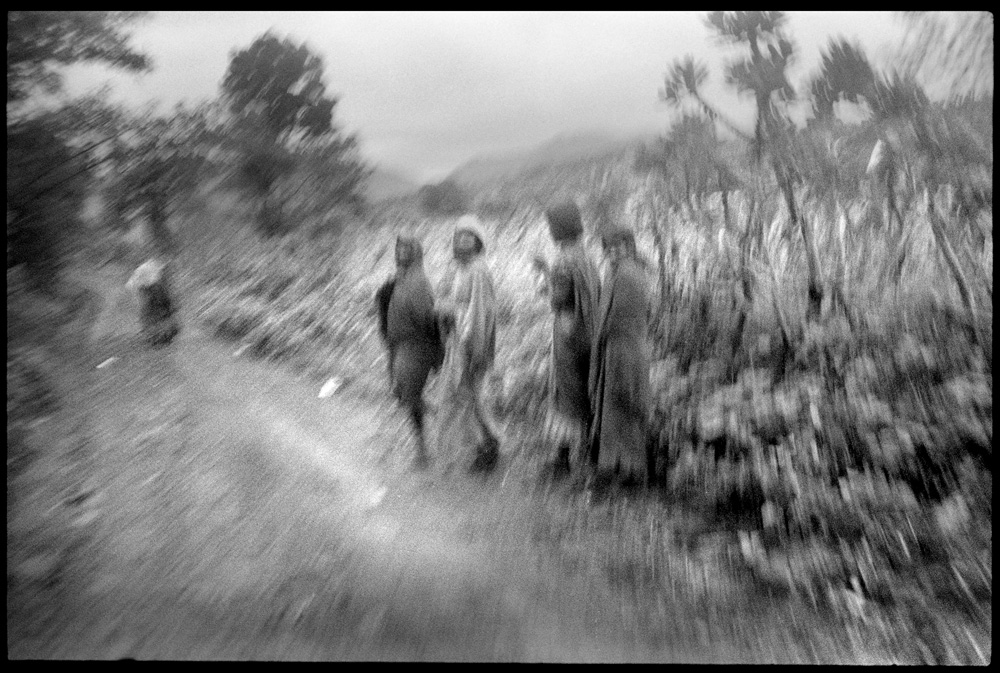
The villagers walking a hazy future down a trodden path. Bharad, Maharashtra, 2004.

Villagers moving along the wet path to the rehabilitation centre. Vadichill, Maharashtra, 2004.
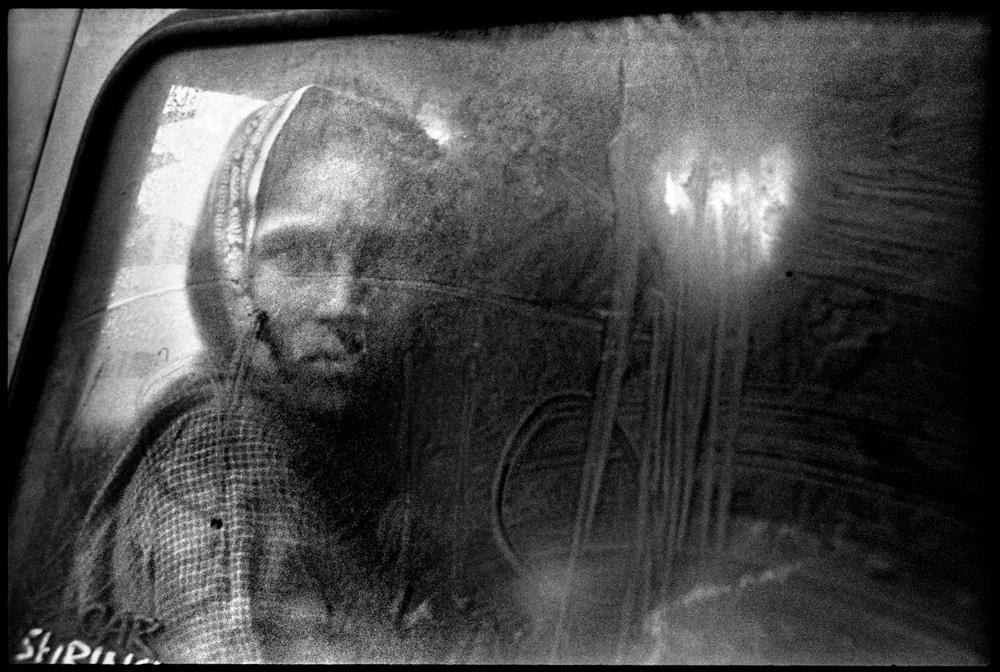
A woman muses her way leading to their new habitat. Vadichill, Maharashtra, 2004.

Woman sitting across a barren land with a bullock. Vadichill, Maharashtra, 2004.

Having moved from an open landscape to a closed array of metal boxes. Rehabilitated settlement, Vadichill, Maharashtra, 2004.

A mother with a child looking ahead. Vadichill, Maharashtra, 2004.
Bio:
N. Jaisingh was born in 1978 in the South Indian village of Vadipatti in Tamil Nadu. He graduated in Master of Communication Studies. Eager to work among the people of Indian villages and capture their reality, he started doing photographic portraits. A serious cinema enthusiast, his fascination for the moving image led him to work in the Mumbai film industry (Bollywood) as an assistant cinematographer from 2005 to 2008. His works are distributed by the Trikaya Photo Agency. Jaisingh has held two solo exhibitions: The Land and the People of Narmada (YMCA Hall, Madurai, 2002) and Roots of Water (Alliance Francaise, Chennai, 2004).





